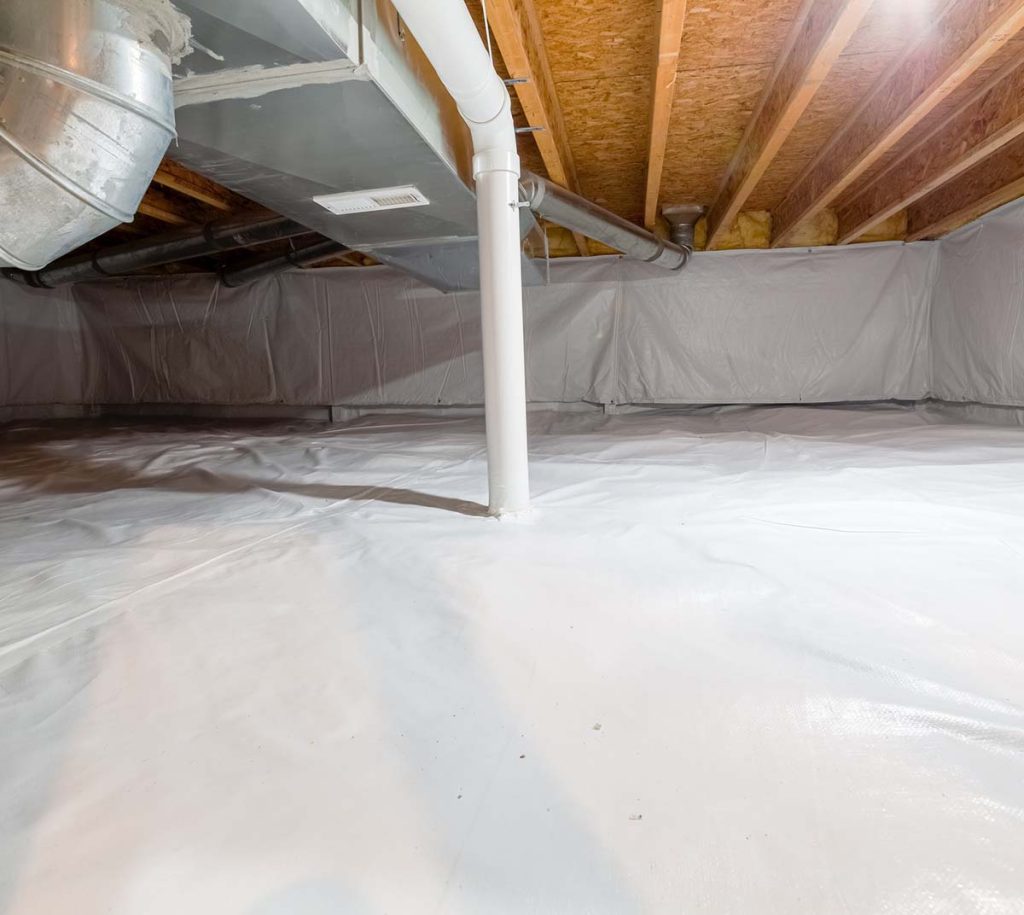Crawl space encapsulation, vapor barriers, home sealing, and other moisture control methods can protect your home and prevent pests from infesting.
Moisture in your home is normal, and a certain amount is necessary. But too much humidity damages a home and leads to mold, mildew, and fungus growth. But it also attracts pests like termites, roaches, and rodents. Therefore, moisture control is essential in maintaining your property and keeping pests away.
At Titan Pest & Wildlife, we specialize in crawl space encapsulation, vapor barriers, and home sealing. These methods protect your home and deter pests from infesting your home.

How to Reduce Moisture in Your Home
Reducing moisture in your home is an effective way to minimize pest issues. Many pests, such as cockroaches, termites, ants, and silverfish, thrive in humid environments. By reducing moisture levels, you create a less favorable habitat for these pests, making it more difficult for them to survive and reproduce. Here are a few ways in which reducing moisture can help mitigate pest problems:
- Eliminating water sources: Pests need water to survive, and by reducing moisture, you remove their water sources. Fix any leaks or plumbing issues promptly, including dripping faucets, leaky pipes, or faulty appliances. Regularly check areas prone to water accumulation, such as under sinks, around toilets, or in basements, and address any problems promptly.
- Proper ventilation: Good airflow and ventilation can help reduce moisture levels in your home. Ensure your home has adequate ventilation in areas prone to moisture, such as bathrooms, kitchens, and basements. Use exhaust fans or open windows while cooking or showering to remove excess water from the air.
- Dehumidifiers: Installing dehumidifiers in areas with high humidity can significantly reduce moisture levels. These devices extract excess moisture from the air, helping to keep it dry and less hospitable for pests. Focus on using dehumidifiers in basements, crawl spaces, or other areas with high humidity.
- Regular cleaning and maintenance: Regularly cleaning your home and maintaining a clutter-free environment can discourage pest infestations. Clean up spills promptly, regularly vacuum or sweep floors, and wipe down surfaces to remove any moisture or food sources that may attract pests.
- Proper drainage: Ensure that your home’s drainage system is working effectively. Redirect rainwater away from the foundation using downspouts, gutters, and extensions. Poor drainage can lead to water pooling near your home, creating a favorable environment for pests.
- Sealing entry points: Pests can enter your home through small cracks and gaps. Inspect your home for potential entry points, such as gaps around windows, doors, pipes, or utility lines. Seal these openings using caulk or weatherstripping to prevent pests from infiltrating your home.
Reducing moisture levels in your home creates a less attractive environment for pests. However, it’s important to note that lowering moisture can be an effective preventative measure, but it may not completely eliminate all pest issues. If you already have a pest infestation, contact professional pest control services to address the problem effectively.

